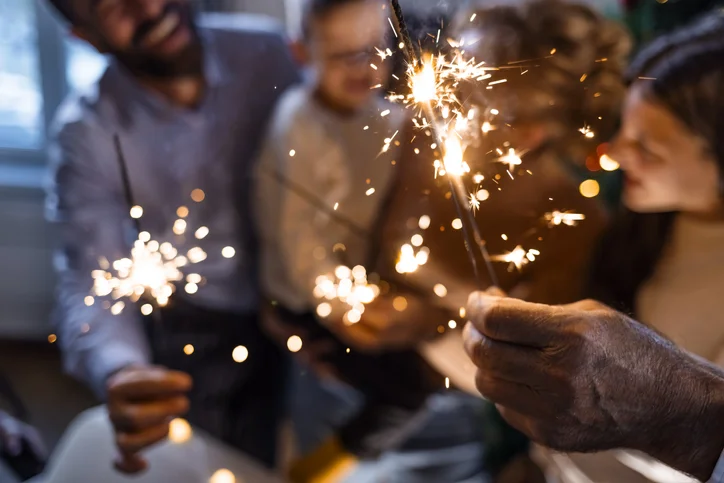The New Year is a holiday we can all celebrate together as we turn the page on one year and begin another. It’s an occasion we’ve marked for generations by observing timeless traditions. But have you ever wondered how these traditions first got started? From the Times Square ball drop to New Year’s resolutions, we look at the history of this popular holiday.
Why We Celebrate New Year’s
You may or may not be aware that New Year’s Day being celebrated on January 1 is a tradition that can be credited to Julius Caesar. In the time of ancient Babylon, the New Year was celebrated on what was known as the “vernal equinox” in late spring. But in 46 B.C. Caesar introduced the Julian calendar, which shifted New Year’s Day to January 1. The change was intended to sync up the calendar with the passage of the sun.
The ancient Romans also celebrated the New Year with parties and libations, but it would be a while before that practice became widespread. The date of January 1 was introduced into Western culture with the adoption of Pope Gregory XIII’s calendar in 1582. The rest is history.
The History of 5 New Year’s Traditions
Ask someone whether they plan to watch “the ball drop” on New Year’s Eve and chances are that person will know exactly what you mean. But when did the New Year’s Eve ball drop in Times Square become such an unmistakable aspect of holiday culture in the United States? Let’s pull back the curtain on the ball drop and four other beloved New Year’s Eve traditions.
Times Square “Ball Drop”
A staple of New Year’s celebrations in America, the ball drop in Time Square first debuted in 1907. Composed of iron, wood and 25-watt light bulbs and weighing in at over 700 lbs., the original ball was introduced as an alternative after fireworks were banned by New York City. It was used as part of the countdown to midnight, in addition to promoting The New York Times.
Other “Ball Drops” Around the United States
The ball drop in Times Square was only the first of many “drops” that are now commonplace across the country. Examples of fun alternatives from around the United States includes:
- The six-foot conch shell that Sloppy Joe’s Bar drops in Key West, FL.
- The giant glowing cherry that descends onto Traverse City, MI amid fireworks.
- The 10-foot, 1,250-lb. Cooper and steel acorn that is dropped in Raleigh, NC.
- The 17-foot potato that is dropped in Boise, ID.
Midnight Kiss
If you’re a romantic, one of your favorite New Year’s Eve traditions is the midnight kiss. There are many examples of midnight kisses throughout history, from the days of the Romans to traditions established in England and Germany in an effort to secure good luck for the year ahead.
Champagne Toast
No New Year’s Eve celebration is complete without a glass of champagne. The tradition is believed to have gained a foothold in popular culture in the 1800’s, as people made the rounds throughout town to visit friends and share a drink together. Champagne had become more affordable for the middle class, so it was an elegant drink that could be offered to guests.
New Year’s Resolutions
In the past, resolutions were made as a solemn promise to God or other religious entities. In the present day, New Year’s resolutions have been used as a means of setting goals for the coming year. Today’s most popular New Year’s resolutions tend to focus on self-improvement. Among Americans, 59% resolve to exercise more, 54% want to eat healthier and 51% hope to lose weight. Sadly, research shows 80% of resolutions fail by February. But you have a chance to be part of the other 20%!


